Located in the northwestern part of the island, in a large bay protected by Akrotiri cape, Kamariotissa (Kamargiotsa in the local dialect) is the town you step into when you arrive in Samothraki. It's unmistakable from afar with its white buildings and church domes, silhouetted against the dark background of Mount Saos.
With almost 1000 inhabitants, Kamariotissa is the largest settlement on the island, more populous than the capital Chora. It is the only port connected to mainland Greece and the central hub for the island's bus lines. The two main roads start from here - the one that crosses the northern side, finishing on the eastern end, at Kipos Beach, and the one that traverses the western and southwestern sides, ending at Pachia Ammos Beach.
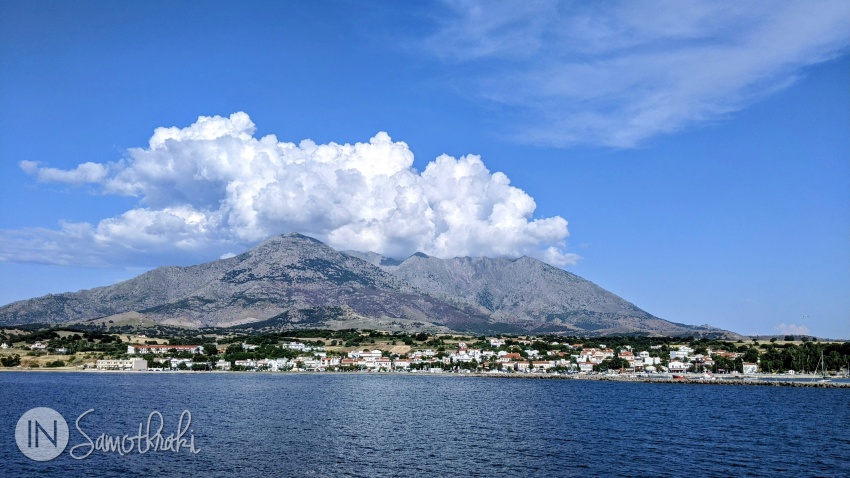
A Bit of History (and Legend)
To the southwest of Kamariotissa, where the small church of Agios Andreas (St. Andrew) is today, was the port of Dimitrion, built around the 6th century B.C. It was the island's second port, after Paleopoli, built by the first Greek settlers who began living in Samothraki around 800-700 B.C. Only some stone fragments remain from the ancient Dimitrion, under the sea, in the area in front of the church.
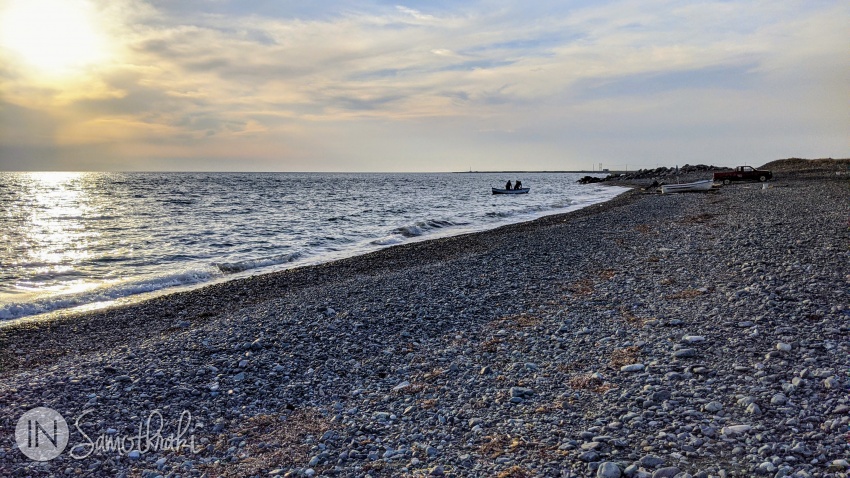
According to legend, Kamariotissa has taken its name from an icon of the Virgin that appeared in the waters of the bay during the Byzantine period. The icon came either from the village of Kamares (today Kemer, on the shores of the Sea of Marmara), or from the Monastery of Panagia Kamariotissa on the island of Chalki (today Heybeliada, one of the Princes' Islands near Istanbul). Supposedly, three fishermen have taken the icon to the shore and built, in the place where the ruins of a chapel already existed, a new small church to house the holy object. Beyond the legend, archaeological research has confirmed the existence, on the site of the current Panagia Kamariotissa church, of a paleo-Christian basilica probably built in the 5th-6th centuries and rebuilt in the middle Byzantine period.
The Kamariotissa you see today is a relatively recent settlement from the beginning of the 19th century, in the form of a small fishing village. The first few families moved here from other villages on the island, especially Alonia and Lakkoma, and the people gave up farming and became fishermen.
After 1922, refugees fleeing the genocide in Asia Minor and former locals returned to the island after being driven out by the Turks.
There was no pier and no harbor in the beginning - just a few houses, a few buildings on the shore, a small shipyard and a boat repair shop. The boats were pulled ashore with the help of wooden beams and tied to poles.
It wasn't until the 1950s that a wooden quay was built, for the goods and passengers coming from the mainland. Until the 1960s, the island was connected to the mainland by wooden boats with sails, and the journey took up to 6 hours (if you think that the 2-hour trip from Alexandroupoli to Samothraki is long, just try to imagine what it was like back then). Among the names of the transport vessels still remembered by the islanders are Panagia (The Virgin), Treis Filoi (Three Friends), Taxiarhis (Archangel) and Manolikas.
Between 1965 and 1967, the harbor (expanded in 1991 and recently deepened) and the concrete pier were built. The latter protects the bay from the north and northwest winds. The ships that ensured the connection to Alexandroupoli were also modernized: in 1968 the ferry Samothraki was brought to the island. The crossing took about 3 hours. The ship could fit around 130 passengers and 2-3 cars. In 1977 the ship Saos was bought with the money of the inhabitants who had emigrated to West Germany. Its capacity was 40 cars and 400 passengers. In Stuttgart, there's still a strong community of people who left Samothraki for Germany in the 1960s and 1970s, and on the island, many older residents speak German (more than English).
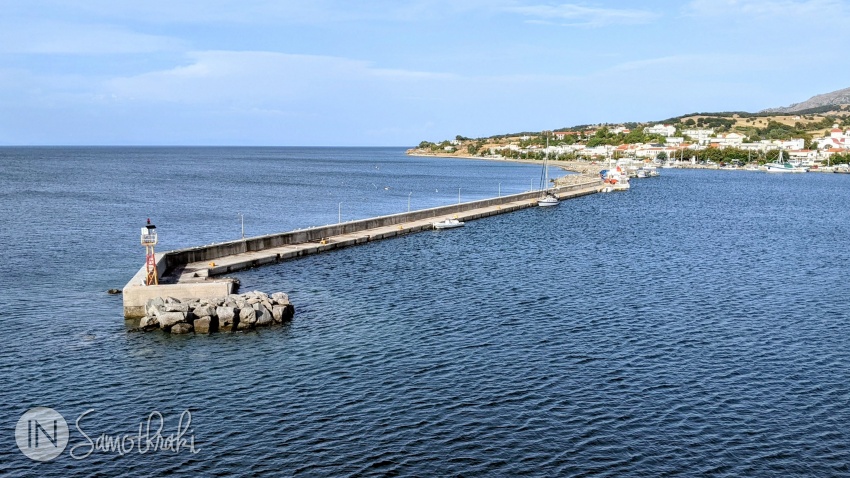
More could be said about the (older but also more recent) history of transport in Samothraki, but maybe this is not the place nor the time. With the ease of access, the number of tourists began to increase, and Kamariotissa turned from a small fishing village into the most commercial, noisy and crowded town on the island (obviously compared to the other settlements in Samothraki). The number of permanent residents has increased, surpassing that of Chora (even though it is the capital), and many of the public services have been moved to the port.
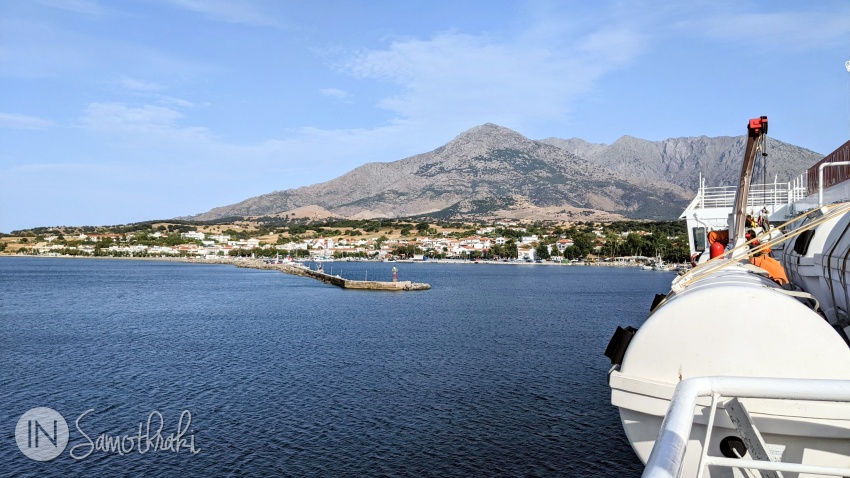
What Can you See in Kamariotissa?
There aren't many attractions to visit in Kamariotissa. The main monument is the Church of Panagia Kamariotissa, a recent construction from the 1970s, where the icon of the Virgin Mary is kept - the one that, according to legend, gave the town its name.
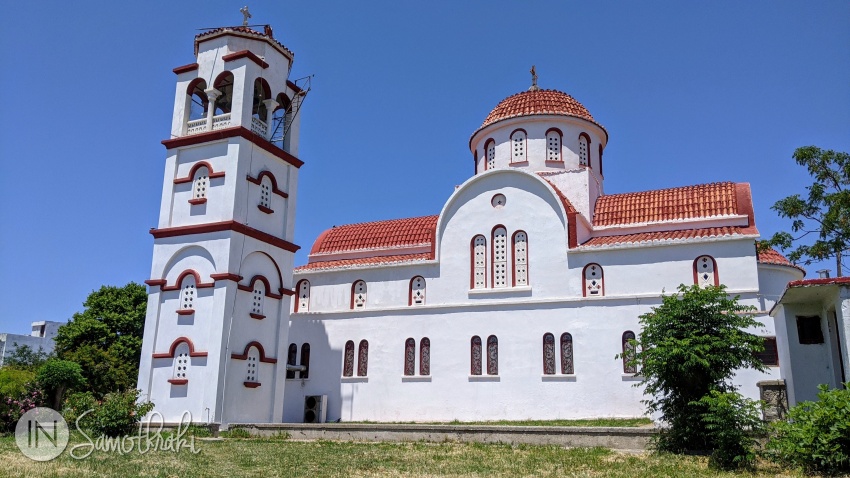
In the square facing the sea, after you leave the port and turn left towards Paleopolis, there is a modern metal statue of the goddess Niki (the famous ancient statue from the Louvre was found on the island of Samothraki and a copy is on display in front of the Archeological Museum).
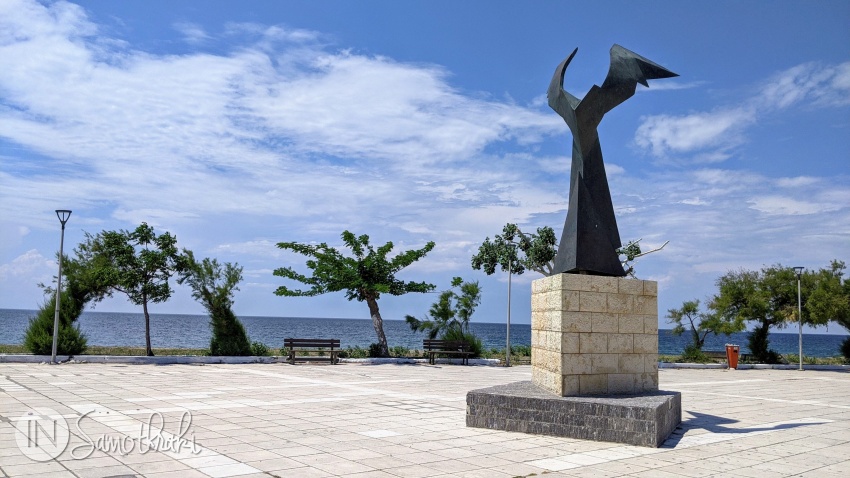
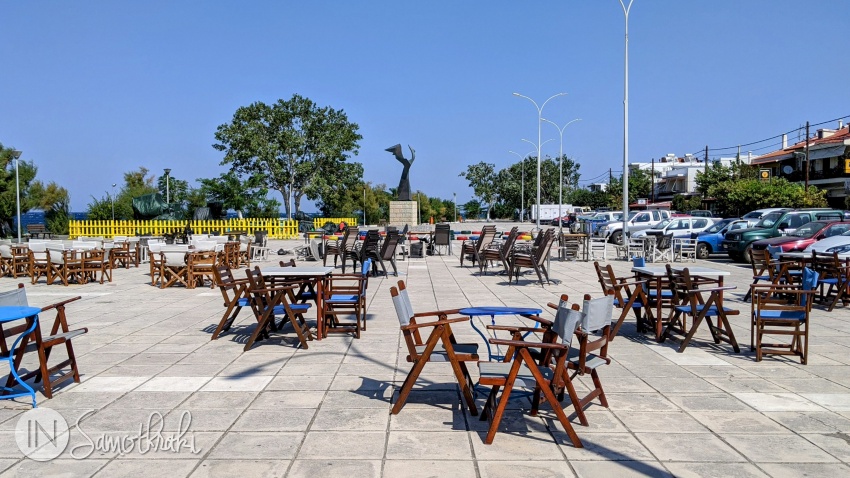
Between the port and the square, usually overlooked because of the cars parked nearby is the small lighthouse of Kamariotissa. It was built in the 1930s and it used to run on acetylene. Back then, it was right on the shore and had the role of signaling the existence of the small settlement. In the meantime, the harbor was built and the lighthouse remained further inland, taking on a simple decorative role.
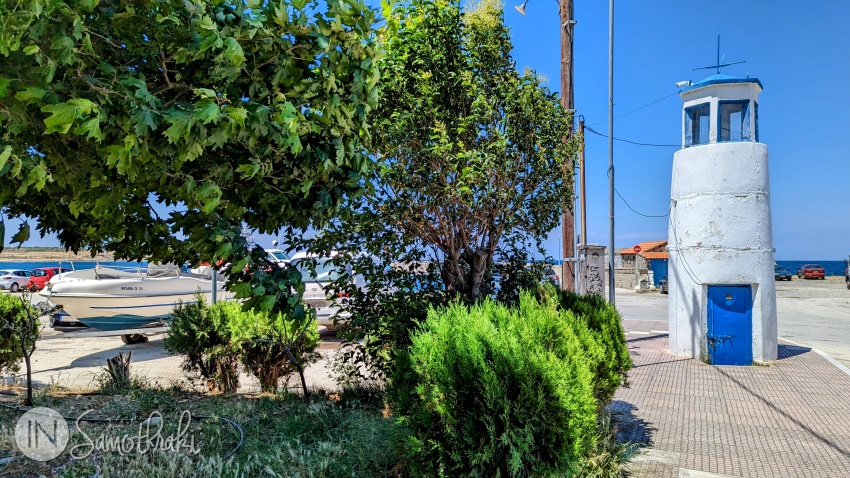
You can walk for about an hour to the Agios Andreas lagoon and the lighthouse on the Akrotiri cape, beautiful places especially at sunset, when the distinct pyramidal silhouette of Mount Athos is easy to see.
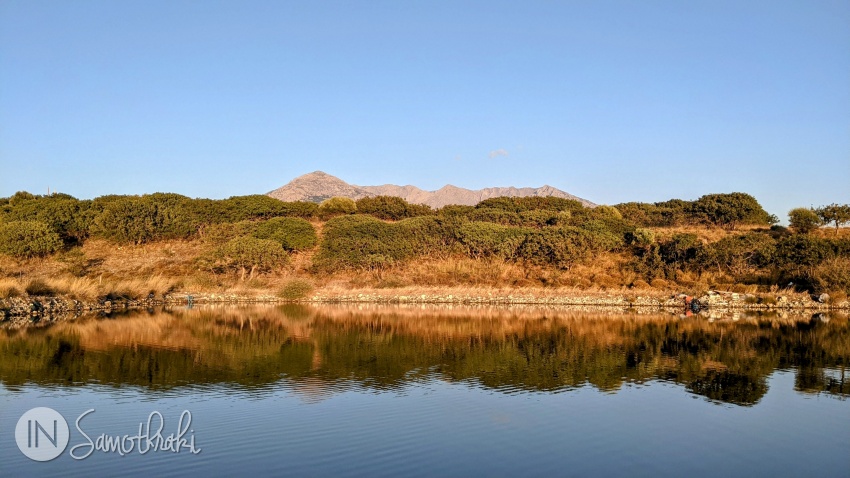
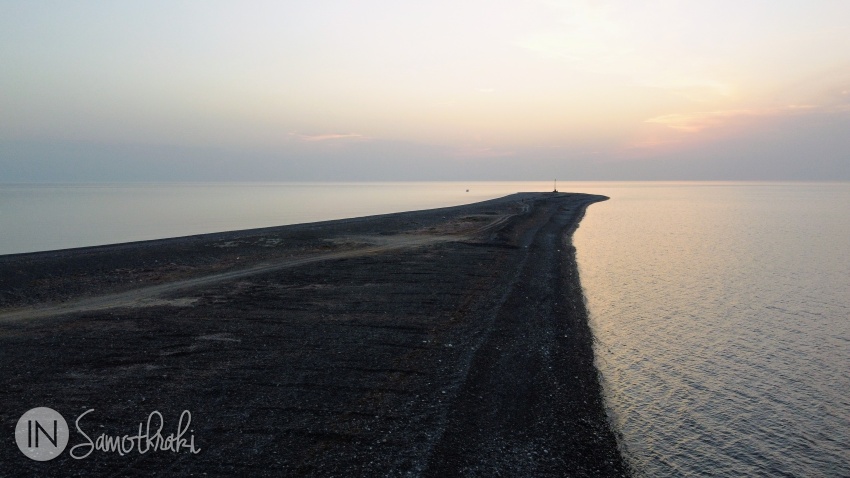
You can also admire the sunset directly from Kamariotissa, from the beach or the benches in the square with the Niki monument. With a bit of luck, you will also see dolphins playing in the water…
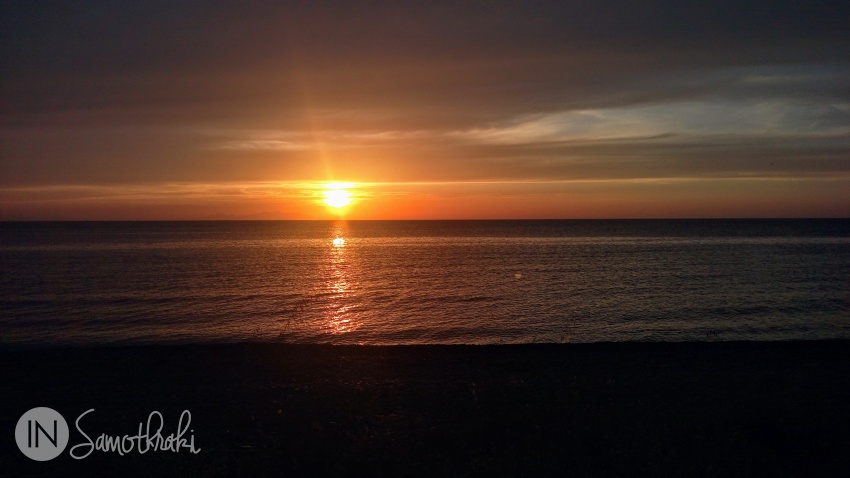
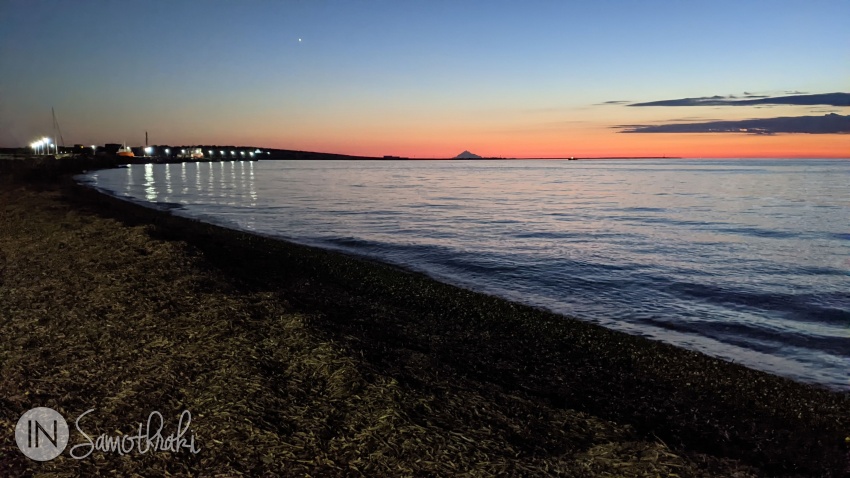
What Services Can You Find in Kamariotissa?
Kamariotissa is where most of the public services in Samothraki are located.
Transport
Just as you get off the ferry, on the street parallel to the seafront, you will find car and scooter rental centers.
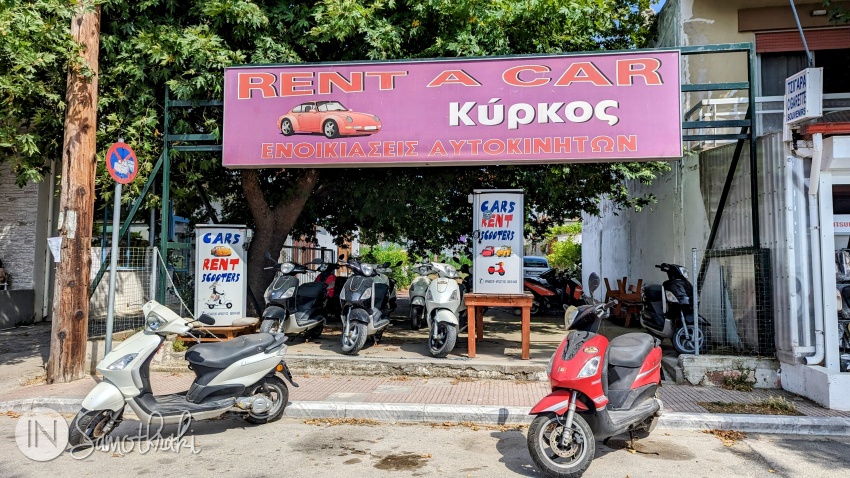
In the harbor, there's a small wooden kiosk (formerly a tourist information office) where the Fast Ferries ticket office is now located. However, I recommend that, at least during the high season, you buy your ferry tickets online. There were quite a few cases where the ferry was sold out or all the standard tickets were finished.
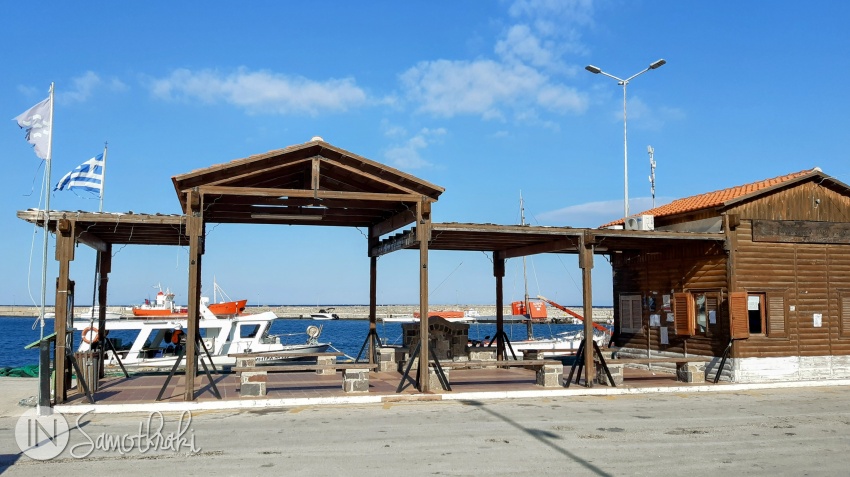
Near the harbor, on the right as you face the water, is the station from where buses leave for the main villages of the island.
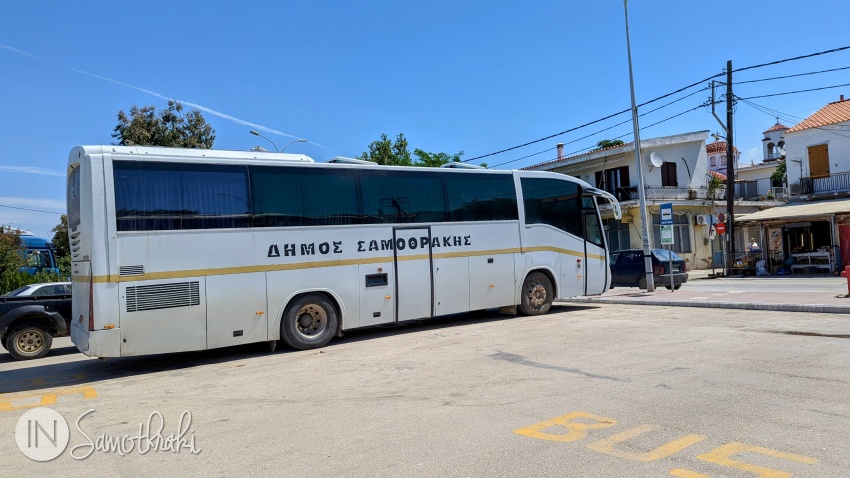
Between the square with the Niki statue and the lighthouse is the Samothraki taxi station.

The only gas station in Samothraki is on the road to Chora.
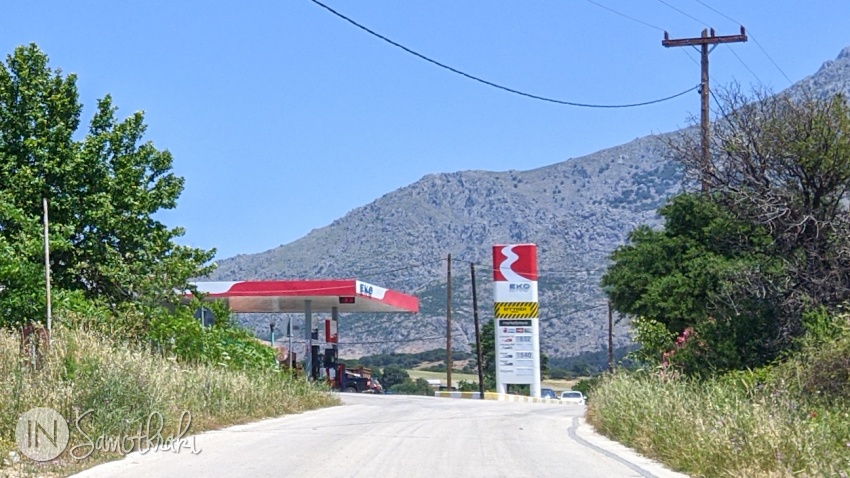
Service and Car Wash
You will find a car service right by the gas station (Alekas, +30 694 315 0668), and another one (Teos Sarikas) in Kamariotissa, near the Fonias brewery. I hope you won't need them, but know that these, plus another car service in Alonia, are the only ones in Samothraki.

A self-service car wash is also located next to the gas station on the left.
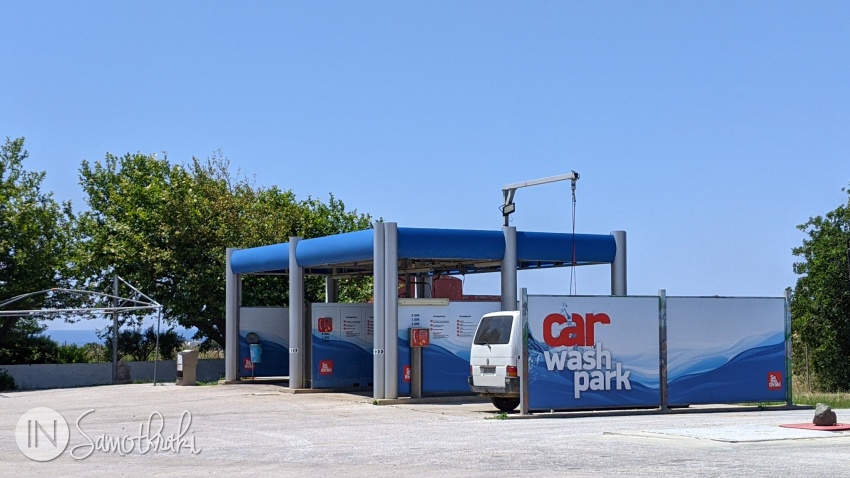
Banks and ATMs
On the main street (the one parallel to the harbor), across from Niki's statue, is a branch of Piraeus Bank (the only bank in Samothraki). You will find an ATM here. Another one, which belongs to the National Bank of Greece (Ethniki Trapeza which, until a few years ago, also had a branch on the island), is a few buildings to the right.
Another ATM (from Alpha Bank) is at the gas station.

Shopping
You can find a minimarket (Salamanis) right across from the harbor. There are also two supermarkets (Salvanos and Papanikolau) nearby.

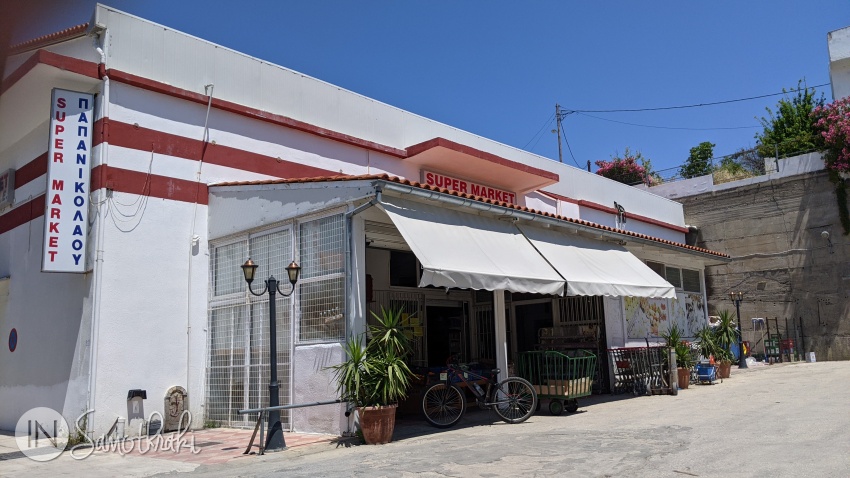
There are also a few souvenir shops on the main street and across the church there's a clothing store.
On the right side of the road to Chora is a small craft brewery.
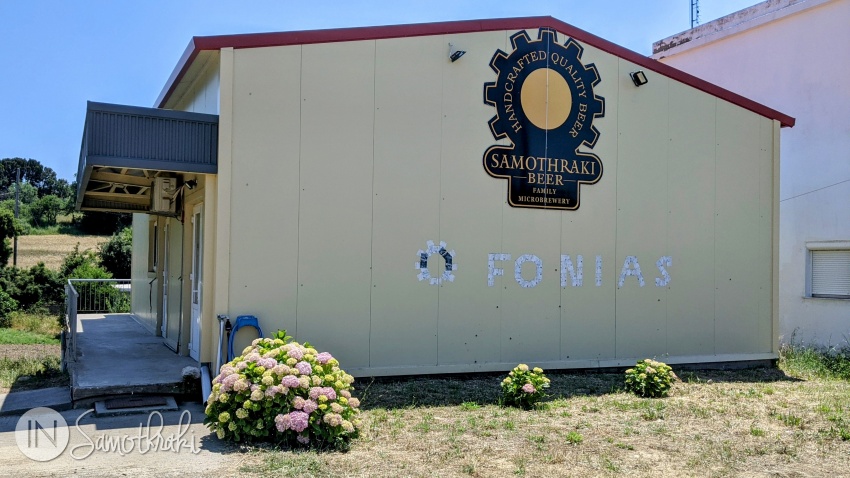
A little further, also on the right, just before the intersection with the road leading to Lakkoma, you will find the Salamanis bakery, in a large courtyard behind lavender and rosemary bushes. I recommend it for bread and pastries, but also sweets. Another bakery can be found closer to the port.
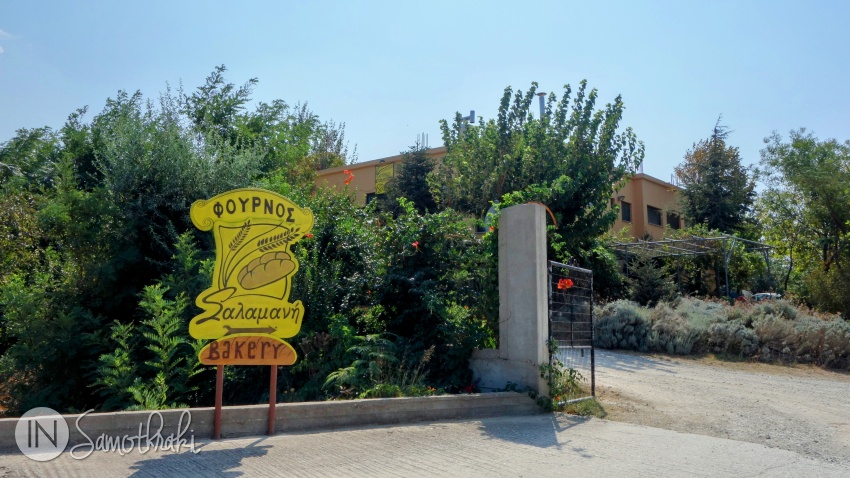
For sweets and local products (especially jams), I also recommend the Aggeliki Confectionery, located on one of the streets leading away from the port.
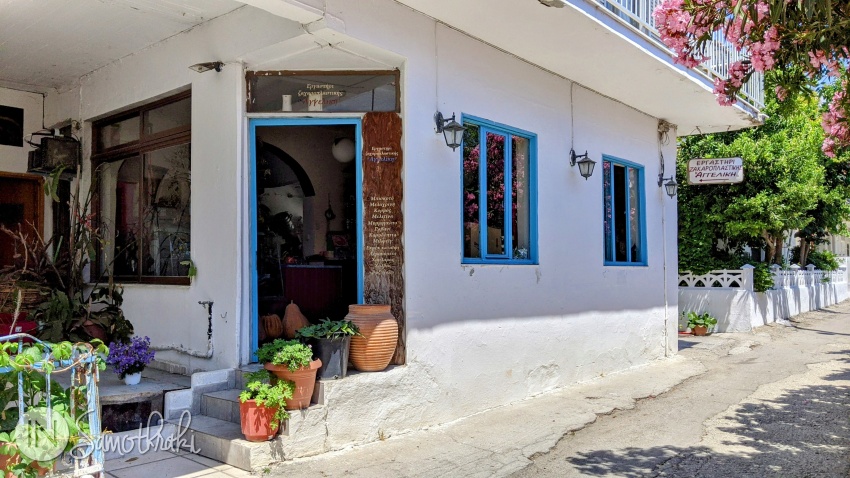
In Kamariotissa there are also two butchers (one near the Aggeliki Confectionery and another on the street with the Papanikolau Supermarket) and a fishery (near the Panagia Kamariotissa church).
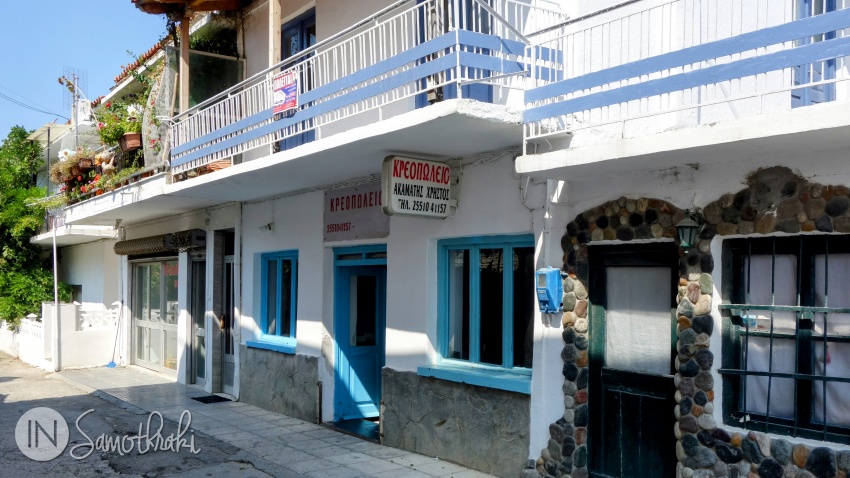
Taverns and Coffee Shops
There are three taverns in Kamariotissa - Limanaki (or Charanas), on the far side of the port, Synantisi (or Giannelos), in the center and Sta Kala Kathoumena (great home cooking), on one of the streets perpendicular to the main street. The first two are mainly fish restaurants (I recommend the fish grilled on coals from Taverna Charanas).
You can also find a pizza place (Fournelo) and two fast food joints - a small restaurant on the main street and a food truck in the port.
The food truck is called Spiros and has the motto Omorfainei den pachainei ("It makes you more beautiful, not fatter"). Try the panseta, which is delicious and comes with a side of potatoes (real ones, sprinkled with oregano). Furthermore, you can also find souvlaki (skewers), loukaniko (sausages), chicken schnitzel or burgers, at prices of a few euros per sandwich.
In Kamariotissa, on the street parallel to the sea, you can also find a lot of the cafes and bars in Samothraki. Try Santigi for coffee, pastries and sweets, Totem for bougatsa (pie with cheese, minced meat or vanilla custard), Kentriko for coffee and pancakes (and of course deserts, when you can find them - Laskaris, the owner of the cafe, is a famous patisserie chef in Greece) and To Scholeio for cocktails.
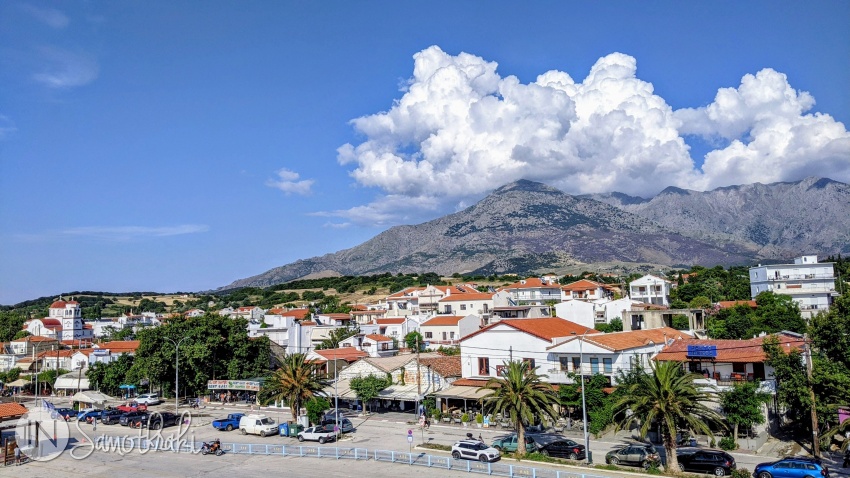
Don't miss the small traditional restaurants - tsipouradiko, where you usually see older locals talking over a tsipouro (a local brandy) and mezedakia (snacks that accompany the tsipouro). You can read more about the food on the island in the article What to Eat in Samothraki.
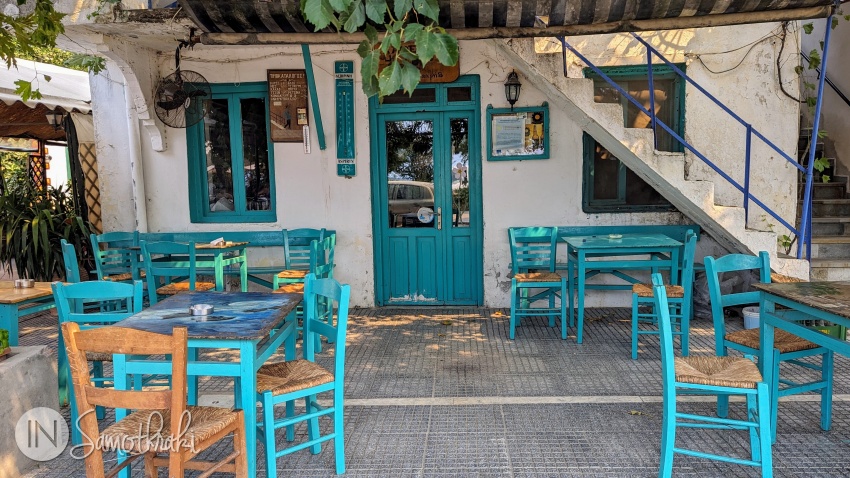
The Post Office
The post office is on the right side of the port (with your back to the water), before Taverna Limanaki (Charanas).
Medical Services
In Kamariotissa there's a small health center (the health center in Chora has been under renovation for many years), a lab for blood work and the only two pharmacies on the island - one next to the Kentriko cafe and the other next to the Synantisi restaurant.
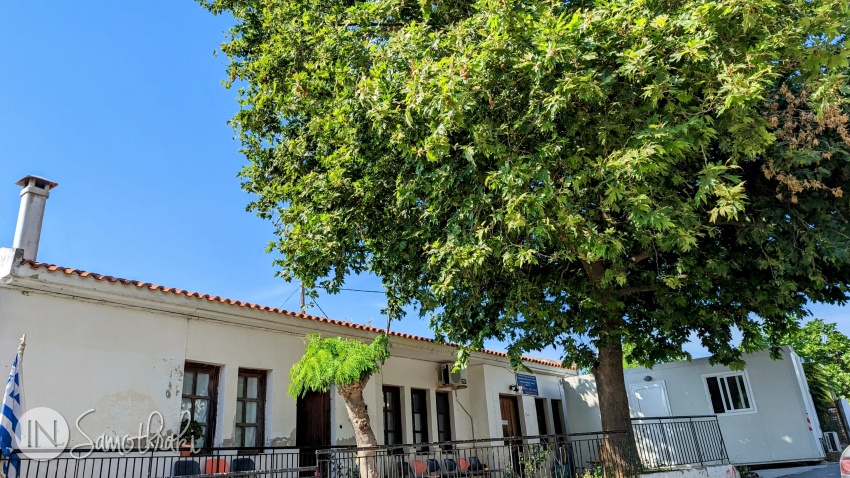
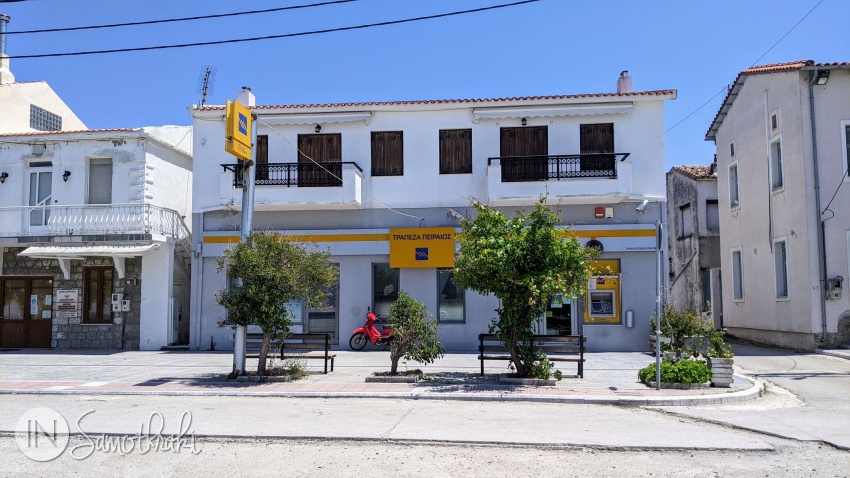
Police and Port Authority
The Samothraki police station is at the beginning of the road to Lakkoma, right after the junction with the road to Chora.
The Port Authority is on the main street of Kamariotissa, opposite the square with the Niki statue.
Pros and Cons of Staying in Kamariotissa
In Kamariotissa there are a few hotels and several guesthouses and apartments (see accommodation in Kamariotissa).
The town is an all-right option if you want to get to know Samothraki. Its position and connections allow you to easily reach both the vathres and waterfalls in the northern part of the island, as well as the beaches of Kipos, in the east, and Pachia Ammos, in the south.
Another argument for Kamariotissa is that it's more lively and has more shops, taverns, bars and cafes than other places.
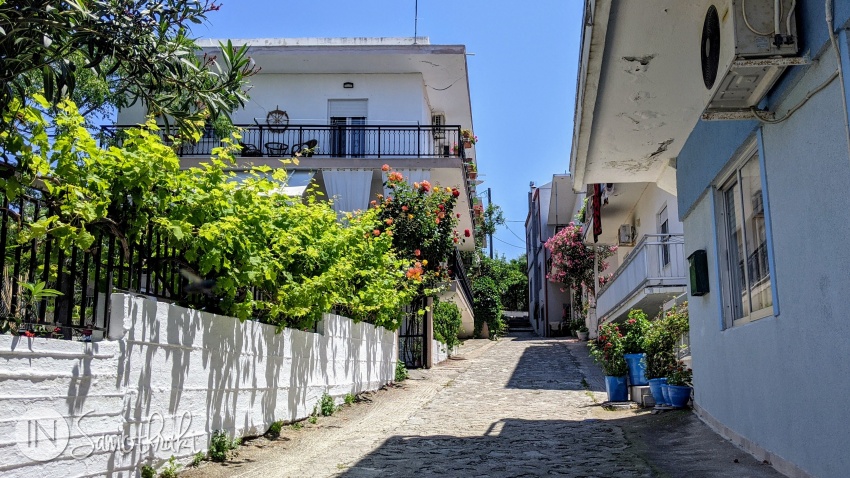
But (because there is always a "but")... people who are not on their first trip to the island will most likely not choose to stay in Kamariotissa. The beach (located on the left and right of the port) is narrow, stony and undeveloped, the buildings are cramped and the vegetation does not compare favorably to that on the northern side. In Samothraki, plenty of other places offer you a more authentic or natural setting.
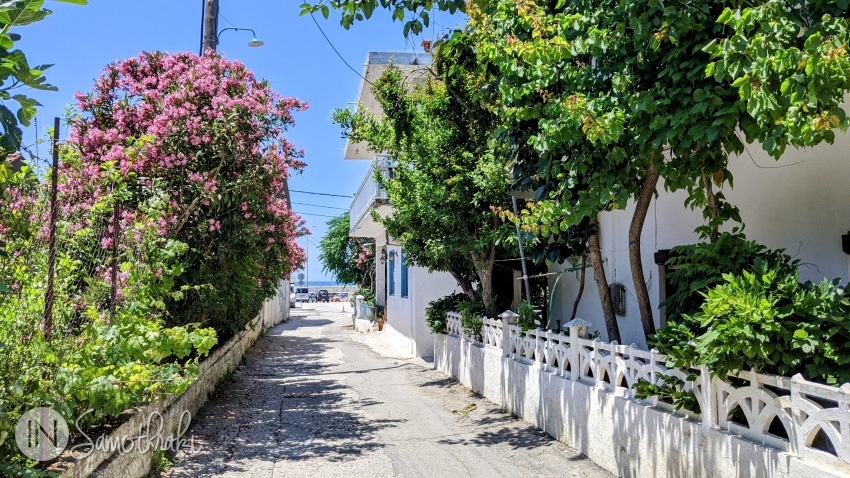


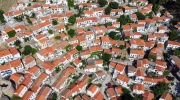 Chora, the Perched Capital of Samothraki
Chora, the Perched Capital of Samothraki
 Panagia Krimniotissa, the Church on the Rock
Panagia Krimniotissa, the Church on the Rock
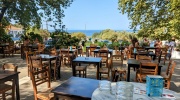 Therma - Mountains and Sea in Samothraki
Therma - Mountains and Sea in Samothraki
 Sanctuary of the Great Gods in Samothraki
Sanctuary of the Great Gods in Samothraki
 Nike, the Winged Victory of Samothrace
Nike, the Winged Victory of Samothrace
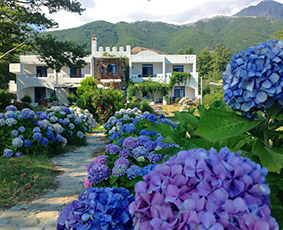
Have you been there?
Tell everyone about your experience!